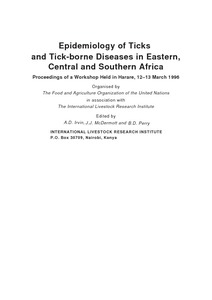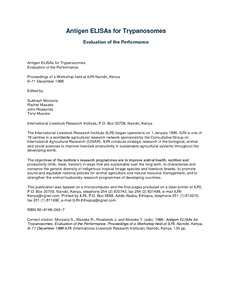Location
Vision, mission and strategy
ILRI's strategy 2013-2022 was approved in December 2012. It emerged from a wide processof consultation and engagement.
ILRI envisions... a world where all people have access to enough food and livelihood options to fulfil their potential.
ILRI’s mission is... to improve food and nutritional security and to reduce poverty in developing countries through research for efficient, safe and sustainable use of livestock—ensuring better lives through livestock.
ILRI’s three strategic objectives are:
- with partners, to develop, test, adapt and promote science-based practices that—being sustainable and scalable—achieve better lives through livestock.
- with partners,to provide compelling scientific evidence in ways that persuade decision-makers—from farms to boardrooms and parliaments—that smarter policies and bigger livestock investments can deliver significant socio-economic, health and environmental dividends to both poor nations and households.
- with partners,to increase capacity among ILRI’s key stakeholders to make better use of livestock science and investments for better lives through livestock.
This is ILRI’s second ten-year strategy. It incorporates a number of changes, many based on learning from the previous strategy (2000–2010, initially produced in 2000 and modified in 2002), an interim strategy (2011–2012) and an assessment of the external and internal environments in which the institute operates.
Members:
Resources
Displaying 951 - 955 of 1152Goat types of Ethiopia and Eritrea: Physical description and management systems
Epidemiology of ticks and tick-borne diseases in eastern, central and southern Africa. Proceedings of a workshop
The first part of this report comprises country reports that deals with epidemiology of ticks and tick-borne diseases in Ethiopia, Kenya, Malawi, Mozambique, South Africa, Swaziland, Tanzania, Uganda, Zambia and Zimbabwe. The second part of the report covers topics on assessing the efficacy of immunization against tick-borne diseases, evaluating delivery systems for the control of tick-borne diseases and measuring the impact of immunization on livestock productivity. The paper ends with a discussion on coordination, collaboration and planning.
The interactive effects of rainfall, nutrient supply and defoliation on the herbage yields of Sahelian rangelands in north-east Mali
In the Sahelian rangelands biomass production is constrained by soil moisture in the drier (100-250 mm) parts and by soil nutrients in the wetter parts. Similarly, for a given Sahelian range, nutrient deficiency would be more prominent in good than in poor rainfall years. To test this hypothesis, fertiliser trials were carried out at sites distributed along the bioclimatic gradient in the Gourma (Mali) over contrasting rainfall years between 1988 and 1992.
The sustainability of rangeland to cropland nutrient transfer in semi-arid West Africa: ecological and social dimensions neglected in the debate
The integration of crops and livestock has often been cited as a model for agricultural development in semi-arid West Africa. Recent formulations treat the adoption of more intensive forms of manuring as a critical step in agricultural development. These analyses have been criticised for ignoring or underestimating the possible negative consequences of such management on rangeland and livestock productivity. This paper critically examines this debate. It is argued that the agronomic benefits of manuring depend largely on nutrient transfers from non-cropped grazing lands.





